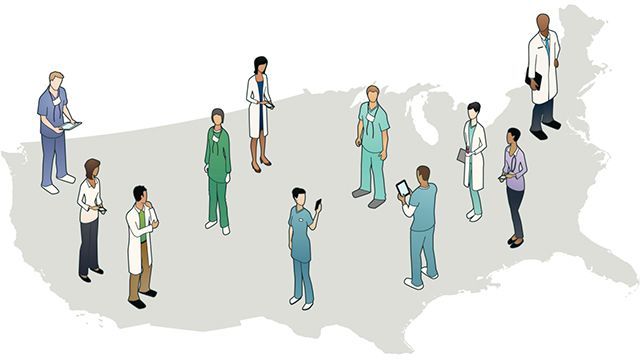Research Reveals States Spend More on Insured Patients
The United States spends more on health care per person than other nations with similar life expectancy. However, this truth does not necessarily mean equality across states and class lines. Overall, the wealthiest states with the most insured citizens spend the most on health care. Continue below to learn more about health care spending.

States with citizens who exhibit the most need for increased health care spending often spend the least
New research from the Center for Medicare and Medicaid Services (CMS) shows that states with high per capita personal income, Medicare-Medicaid enrollment and health care capacity spent the most on health care, while states with many uninsured citizens spent less.
RELATED: More Coverage on
- New Study Reveals Causes of Early Childhood Caries
- Physical and Mental Disability as Co-Morbid Conditions in a Disability Claim
- Creating Your Own Pension Using an Economist-Recommended Method
Lead author David Lassman, a statistician from the CMS, and a team of researchers found that macroeconomic factors caused the rate of health care spending to increase, but did not affect state spending rankings over the past 2 1/2 decades.
“These estimates, which provide information about consumption of health care by residents of a state, serve as a baseline for state and national-level policy discussions,” the team said in Health Affairs.
New England spent 26 percent more than the 2014 national average on health care, while the Rocky Mountain region spent 15 percent less, according to the study. Alaska spent the most on health care in 2014 at $11,064, Utah spent the least at $5,982 and the national average was $8,045.
“Regression analysis of per capita personal health care spending at the state level also suggests a strong positive relationship between that spending and per capita income,” the team said.
States with higher per capita income had higher health care expenses than states with lower per capita income. Regional income data accounted for approximately 60 percent of the variation in health care spending between states from 1991 and 2014.
Recession and Recovery
Unemployment following the 2008 economic recession led to decreased per capita income and loss of private health insurance for many citizens. Areas hit hardest by the economic recession saw a large decrease in personal health care spending rates and an increase in uninsured citizens and Medicaid enrollment.
From 2010 through 2013, however, economic recovery generated employment and personal income, causing the opposite effect. States with rapid per capita income growth had the greatest personal health care spending acceleration, while states with slow per capita income growth had the lowest.
The Affordable Care Act (ACA)
“State-specific impacts of the ACA coverage expansions are most evident in the underlying trends for Medicaid and private health insurance spending by state,” the study said.
Per capita Medicaid expenses increased by 12.3 percent in expansion and by 6.2 percent in nonexpansion states. Per enrollee Medicaid expenses, on the other hand, decreased by 5.1 percent in expansion states while increasing the same percentage in expansion states.
The research showed the opposite trend for private health insurance. Nonexpansion states saw faster private health insurance enrollment growth than expansion states.
“This more rapid growth was caused, in part, by enrollment in Marketplace plans, as nonexpansion states accounted for 53.4 percent of Marketplace enrollment but 45.5 percent of overall private health insurance enrollment in 2014,” Lassman said